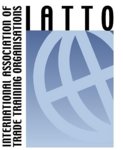New Zealand's International Trade - Questions & Answers
Answers are given to eleven commonly asked questions about New Zealand's international trade. Each answer has an information source and the date on which it was answered. You should use the source information as well as the answer for your assignments or debating preparation. If the questions you want answered are not here, email us at library@export.ac.nz – we may be able to include them in our page.
Q.1 What are New Zealand’s top ten merchandise exports?
In the year ended June 2009 New Zealand’s top ten export products were:
Rank Product Value * % of Total
1. Dairy $9,057 21.1
2. Meat $5,525 12.8
3. Wood $2,330 5.4
4. Mineral fuels $2,152 5.0
5. Machinery $1,841 4.3
6. Fruit and nuts $1,612 3.7
7. Starch $1,302 3.0
8. Fish $1,301 3.0
9. Beverages such as wine $1,164 2.7
10. Aluminium and aluminium products $1,101 2.6
* Millions NZ$
Information source: Global New Zealand – international trade, investment, and travel profile: year ended June 2009. Wellington: Statistics New Zealand, 2009 Table 3.01 Answered: 21 April 2010
Q.2 What are New Zealand’s top ten merchandise imports?
New Zealand’s top ten imports in the year ended June 2009 were:
Rank Product Value * % of total
1. Petroleum and other petroleum products $7,347 15.9
2. Mechanical machinery and equipment $5,771 12.5
3. Electrical machinery and equipment $4,326 9.4
4. Vehicles, parts and accessories $3,957 8.6
5. Plastics and plastics goods $1,669 3.6
6. Photographic equipment $1,403 3.0
7. Aircraft $1,382 3.0
8. Pharmaceutical products $1,185 2.6
9. Paper products $1,028 2.2
10. Iron and steel and iron and steel goods $0,962 2.1
* Millions NZ$
Information source: Global New Zealand – international trade, investment, and travel profile: year ended June 2009. Wellington: Statistics New Zealand, 2009 Table 3.02 Answered: 21 April 2010
Q.3 What is the value of New Zealand’s exports and imports?
Exports: for the year ended June 2009, New Zealand's merchandise exports were valued
valued at NZ$43.0 billion.
Imports: for the year ended June 2009 the total value of New Zealand’s imports was NZ$46.1
billion.
Thus we have a Balance of Trade deficit because there is a $3 million difference between what we export and what we import.
Information source: Global New Zealand – international trade, investment, and travel profile: year ended June 2009. Wellington: Statistics New Zealand, 2009 p.1 Answered: 21 April 2010
Q.4 What are the ten countries which buy most of our exports?
In the year ended June 2009 these ten countries bought most of our exports:
Rank Country Value * %age of total
1. Australia $9,716 22.5
2. United States $4,807 11.1
3. Japan $3,373 7.83
4. China $3,359 7.8
5. United Kingdom $1,756 4.08
6. South Korea $1,281 2.9
7. Indonesia $1,064 2.4
8. Germany $860 1.99
9. Hong Kong $822 1.91
10. Malaysia $795 1.84
Information Source: Global New Zealand – international trade, investment, and travel profile: year ended June 2009. Wellington: Statistics New Zealand, 2009 Table 2.00 Answered: 21 April 2010
Q.5 What are the top ten countries that we buy products from?
These are the rankings for the year ended June 2009:
Rank Country Value * %age total imports
1. Australia $8,105 17.6
2. China $6,658 14.4
3. United States $4,645 10.1
4. Japan $3,621 7.87
5. Germany $1,983 4.31
6. Singapore $1,860 4.04
7. South Korea $1,483 3.22
8. France $1,393 3.02
9. Qatar $1,347 2.92
10. Malaysia $1,337 2.90
* Millions NZ$
Information Source: Global New Zealand – international trade, investment, and travel profile: year ended June 2009. Wellington: Statistics New Zealand, 2009 Table 2.00 Answered: 21 April 2010
Q.6 What are the top exporting countries in the world?
These are the top exporting countries in the world in 2008:
Rank Country % Share
1. Germany 9.1
2. China 8.9
3. United States 8.0
4. Japan 4.9
5. Netherlands 3.9
6. France 3.8
7. Italy 3.3
8. Belgium 3.0
9. Russia 2.9
10. United Kingdom 2.9
New Zealand is not in the list of the top 50 exporting countries. Note that in estimated figures for 2009 it was 63rd.
(Source: Wikipedia http://en.wikipedia.org/wiki/List_of_countries_by_exports
Information Source: World trade developments: Table 1.8 Leading exporters and importers in world merchandise trade, 2008. World Trade Organisation, 2009. Retrieved on 19 May from: http://www.wto.org/english/res_e/statis_e/its2009_e/its09_world_trade_dev_e.pdf
Question answered 19 May 2010
Q.7 Which exporting companies rank highly in the top 200 New Zealand Companies?
- Fonterra Cooperative Group (1)
- Fletcher Building (2)
- Silver Fern Farms (14)
- Nuplex Industries (21)
- ZESPRI Group (23)
- Fisher & Paykel Appliances Holdings (24)
- Ebos Group (25)
- Alliance Group Ltd (26)
- PGG Wrightson (27)
- ANZCO Foods (33)
The number in brackets following the company name is the rank in the Top 200 New Zealand Companies list.
Information source: New Zealand companies (2009) New Zealand management v.56 no.11 p.70-93 Downloaded from Australia/New Zealand Reference Centre database 21 April 2010 Answered: 21 April 2010
Q.8 Which Government department is in charge of our international trade?
The Ministry of Foreign Affairs and Trade (MFAT).
Information Source:
http://www.mfat.govt.nz/About-the-Ministry/index.php Retrieved 20 April 2010
Answered: 21 April 2010
Q.9 Who were the winners of the 2010 New Zealand International Business Awards?
The winners were:
Pumpkin Patch
M-Com
Gallagher Security Management Systems
Simcro
Grasslanz Technologies
GMP Pharmaceuticals
and for leadership in international business: Steve Wilson, John Brakenridge
Information Source: http://www.nzte.govt.nz/latest-events/new-zealand-international-business-awards/award-winners-2010/pages/award-winners-2010.aspx
Answered: 24 August 2011
Q.10 Which countries does New Zealand have Free Trade Agreements with?
Each Agreement is linked to further information from the New Zealand Ministry of Foreign Affairs. You can also find further information about 'free trade agreements' from the catalogue of the Export Library & Information Service.
- HONG KONG: New Zealand-Hong Kong, China Closer Economic Partnership (NZ-HK CEP entered into force on 1 January 2011)
- MALAYSIA: New Zealand-Malaysia Free Trade Agreement (MNZFTA entered into force on 1 August 2010)
- ASEAN-Australia-New Zealand Free Trade Agreement (AANZFTA) - 2010
- CHINA: New Zealand-China Free Trade Agreement (NZ-China FTA) - 2008
- PACIFIC RIM: Trans-Pacific Strategic Economic Partnership (P4) - 2005
- THAILAND: New Zealand-Thailand Closer Economic Partnership (NZTCEP) - 2005
- SINGAPORE: New Zealand-Singapore Closer Economic Partnership (NZSCEP) - 2001
- AUSTRALIA: Australia-New Zealand Closer Economic Relationship (CER) - 1983
- AUSTRALIA: New Zealand-Australia Closer Economic Relations Investment Protocol (CER IP) (Subject to Parliamentary Treaty Examination, expected to enter into force in the second half of 2011)
Information source:
http://www.mfat.govt.nz/Trade-and-Economic-Relations/2-Trade-Relationships-and-Agreements/index.php#negotiation Retrieved 26 August 2011. Answered 26 August 2011.
Q.11 What is the global body responsible for professional training in international trade (export & import)?
IATTO – the International Association of Trade Training Organisations www.iatto.org. The only IATTO accredited provider in New Zealand is the New Zealand School of Export www.export.ac.nz
Page last updated 26 August 2011









